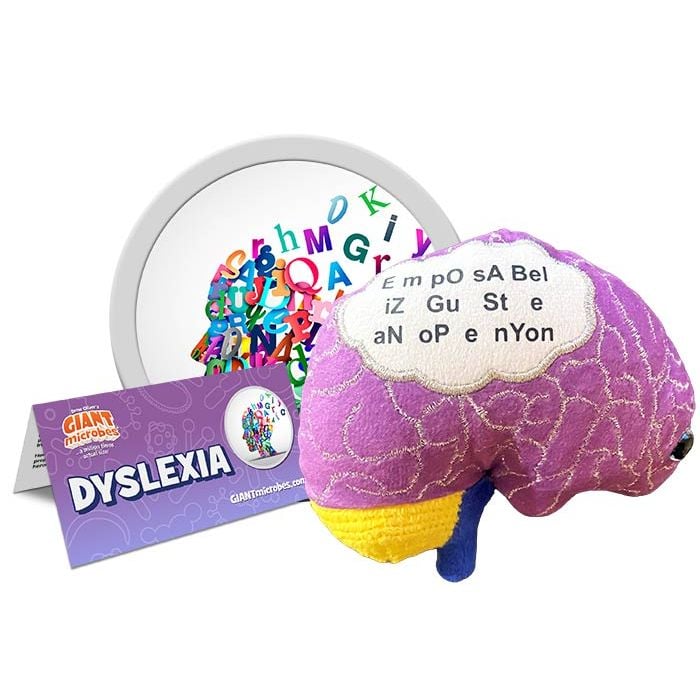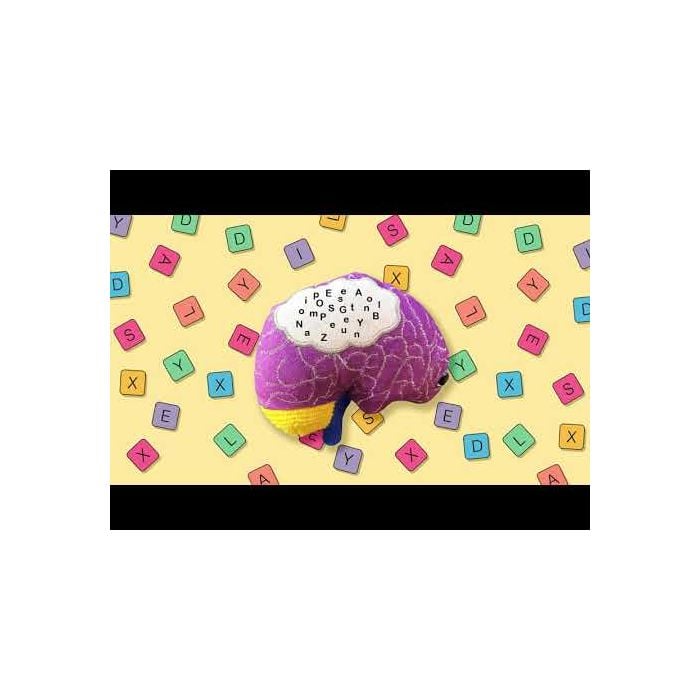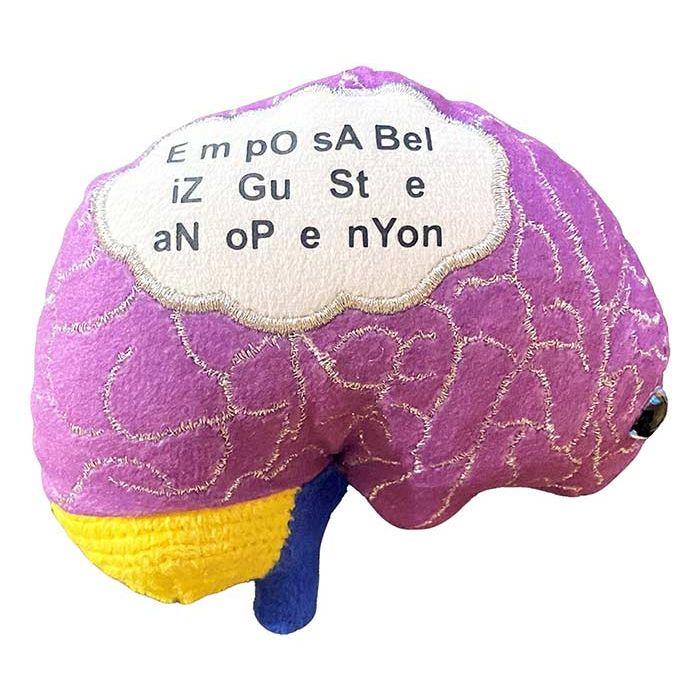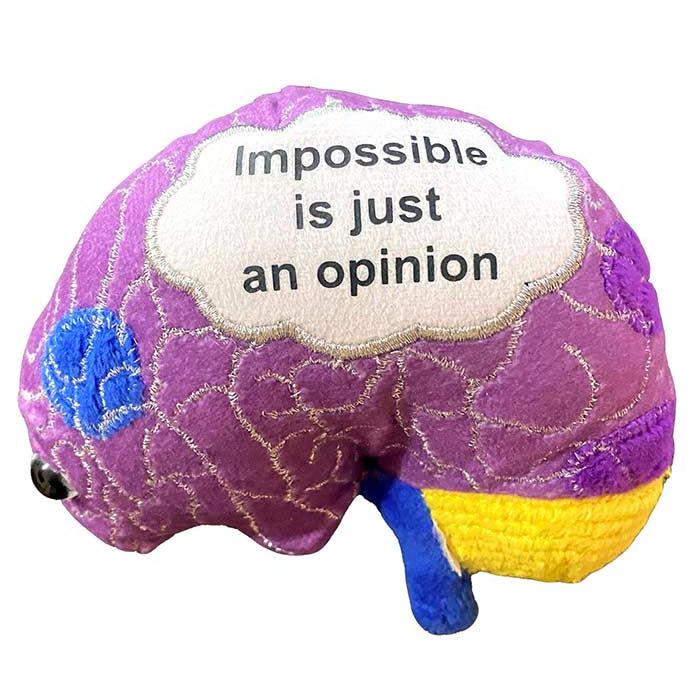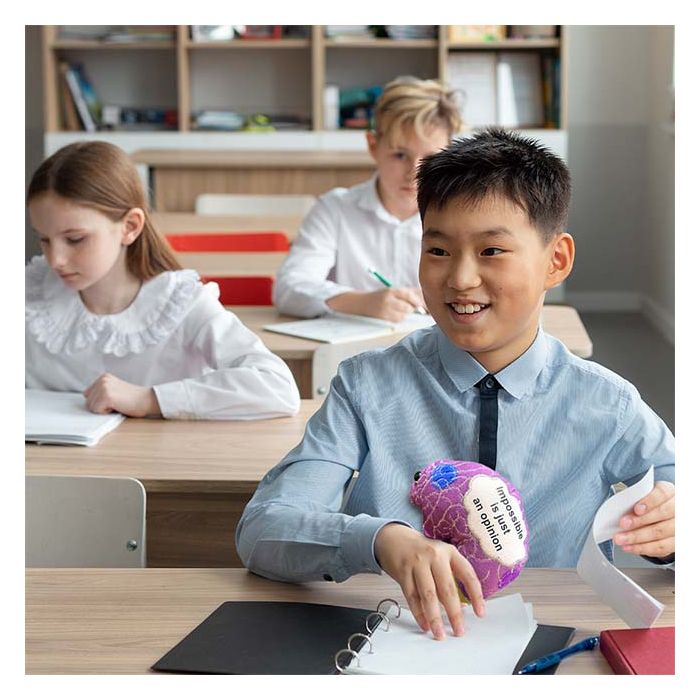Dyslexia
Dyslexia is a learning difference associated with how the brain processes language. People with dyslexia often have strong creative or analytical skills, indicating that there’s more than one way to be brilliant.
Our Dyslexia plushie is a unique way to celebrate neurodiversity! This double-sided brain features the phrase "Impossible is just an opinion" on one side, while the other scrambles the words.
Perfect for educators, parents, and advocates, this soft, scientifically inspired product helps raise awareness and spark conversations about dyslexia. A thoughtful gift that highlights the creativity, problem-solving and unique strengths of our minds.
Size: 4.5 x 4 x 3"
Product Details
Additional Information
| Sizes | Giantmicrobes are based on actual microbes, cells, organisms and other critters, only 1,000,000 times actual size! Gigantic (GG) 16-24" XL (XL) 10-15" Original (PD) 5-8" Keychain (KC) 2-4" with clip |
|---|---|
| Materials | Plush from all new materials. Stuffed with polyester fiber fill. Surface washable: sponge with water & soap, air dry. |
| Packaging | Each plush microbe includes a printed card with fun, educational and fascinating facts about the actual microbe or cell. |
| Safety | Every product meets or exceeds U.S. and European standards for safety. For ages 3 and up. |
All about Dyslexia
FACTS: Dyslexia is a learning difference that can make reading, writing, spelling and math more challenging than usual. Dyslexia is all in how the brain processes language. People with dyslexia often have strong creative or analytical skills, indicating that there’s more than one way to be brilliant.
The first documented case of dyslexia was in 1896 by a doctor who diagnosed “word blindness” in a student who struggled with reading. Since then, our understanding has evolved tremendously. We recognize dyslexia as a unique neurological difference rather than an issue of vision or intelligence.
Dyslexia primarily affects the way the brain decodes words, often making it hard to recognize sounds and link them to letters. Reading can feel slower, and letters such as “b” and “d” might flip around as if they’re playing tricks. But despite these challenges, people with dyslexia often develop clever ways to tackle reading tasks and boost their language skills.
Scientists have found that dyslexia often runs in families, pointing to a genetic link, though other factors such as early brain development may also play a role. Up to 1 in 5 people might experience some form of dyslexia, making it one of the most common learning differences. Acquired dyslexia, or alexia, can develop after brain injury, stroke, or other neurological conditions, affecting reading abilities that were previously intact.
Fortunately, with the right strategies and support, people with dyslexia can become confident readers and writers. Tools like text-to-speech software, phonics-based approaches, and even audiobooks can make a huge difference. And since dyslexia can come with unique strengths, such as unconventional problem solving and heightened creativity, it’s a reminder that brains aren’t one size fits all. Dyslexia shows us that thinking differently is not only okay – it’s often exceptional!







